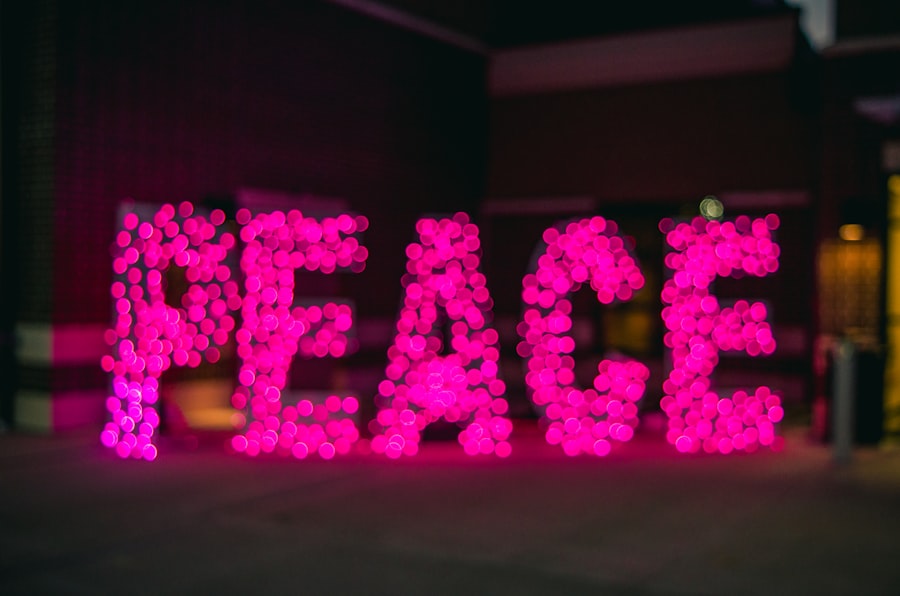To grasp the concept of wholeness, you must first recognize that it transcends mere physical completeness. Wholeness encompasses the integration of your mind, body, and spirit, creating a harmonious existence that allows you to thrive. It is about acknowledging all aspects of yourself, including your strengths and weaknesses, and understanding how they contribute to your overall being.
When you embrace wholeness, you begin to see yourself as a multifaceted individual, capable of growth and transformation. In your journey toward wholeness, it is essential to cultivate self-awareness. This means taking the time to reflect on your thoughts, emotions, and behaviors.
By doing so, you can identify patterns that may be holding you back from achieving a sense of completeness. You might find that certain beliefs or habits are limiting your potential. Recognizing these elements is the first step toward integrating them into your understanding of self, allowing you to move forward with a greater sense of purpose and clarity.
Key Takeaways
- Understanding wholeness involves integrating all aspects of oneself, including physical, emotional, mental, and spiritual well-being.
- Inner peace is essential for overall well-being and can be cultivated through practices such as meditation and mindfulness.
- Letting go of past hurts is crucial for emotional healing and moving forward in life with a sense of freedom and peace.
- Embracing self-acceptance involves recognizing and embracing one’s strengths and weaknesses without judgment or criticism.
- Cultivating mindfulness and presence allows individuals to fully engage with the present moment and experience life more fully.
The Importance of Inner Peace
Inner peace is a vital component of wholeness that often eludes many individuals. It is the calm center within you that remains undisturbed by external chaos. To achieve inner peace, you must learn to navigate the complexities of life with grace and resilience.
This involves developing coping strategies that help you manage stress and anxiety effectively. You may find solace in practices such as meditation, deep breathing exercises, or simply taking time for yourself in nature. As you cultivate inner peace, you will notice a profound shift in your perspective.
Challenges that once seemed insurmountable may become more manageable as you learn to approach them with a sense of calm. This newfound tranquility allows you to respond to life’s ups and downs with a balanced mindset, fostering a deeper connection with yourself and those around you. Ultimately, inner peace serves as a foundation for wholeness, enabling you to live authentically and fully.
Letting Go of Past Hurts

Letting go of past hurts is a crucial step in your journey toward wholeness. Holding onto emotional baggage can weigh you down and prevent you from fully engaging with the present moment. You may find it challenging to release these painful memories, but acknowledging them is the first step toward healing.
By confronting your past, you can begin to understand how it has shaped your beliefs and behaviors today. As you work through these emotions, consider the power of forgiveness—both for yourself and others. Forgiveness does not mean condoning harmful actions; rather, it is about freeing yourself from the grip of resentment and anger.
When you choose to forgive, you reclaim your power and create space for new experiences and relationships. This process may take time, but each step you take toward letting go brings you closer to a sense of wholeness and emotional freedom.
Embracing Self-Acceptance
| Metrics | Data |
|---|---|
| Self-Acceptance Level | High |
| Self-Criticism | Low |
| Self-Compassion | High |
| Self-Esteem | Positive |
Self-acceptance is an essential aspect of achieving wholeness.
You may struggle with self-criticism or comparison to others, but it is vital to remember that everyone has their unique journey.
By accepting yourself as you are—flaws and all—you create a solid foundation for personal growth and fulfillment. To foster self-acceptance, practice self-compassion. Treat yourself with the same kindness and understanding that you would offer a friend facing similar challenges.
This shift in mindset can be transformative, allowing you to appreciate your individuality rather than focusing on perceived shortcomings. As you cultivate self-acceptance, you will find that your confidence grows, empowering you to pursue your passions and live authentically.
Cultivating Mindfulness and Presence
Mindfulness is a powerful tool for enhancing your sense of wholeness. By cultivating mindfulness, you learn to be fully present in each moment, allowing you to experience life more deeply. This practice encourages you to observe your thoughts and feelings without judgment, fostering a greater understanding of yourself and your surroundings.
You might start by incorporating simple mindfulness exercises into your daily routine, such as mindful breathing or paying attention to the sensations in your body. As you become more attuned to the present moment, you’ll likely notice a reduction in stress and anxiety. Mindfulness helps you detach from negative thought patterns and encourages a more positive outlook on life.
By embracing this practice, you create space for joy and gratitude, enhancing your overall sense of well-being. Ultimately, cultivating mindfulness allows you to connect more profoundly with yourself and others, contributing to a greater sense of wholeness.
Nurturing Emotional Well-Being

Emotional well-being is an integral part of achieving wholeness. It involves recognizing and managing your emotions in a healthy way. To nurture your emotional well-being, start by developing emotional intelligence—the ability to understand and regulate your emotions while empathizing with others.
This skill can enhance your relationships and improve your overall quality of life.
These practices allow you to process emotions constructively rather than suppressing them.
As you nurture your emotional well-being, you’ll discover that it becomes easier to navigate life’s challenges with resilience and grace, ultimately leading to a more fulfilling existence.
Connecting with Spirituality
Connecting with spirituality can significantly enhance your journey toward wholeness. Spirituality is not confined to religious beliefs; it encompasses a broader understanding of your place in the universe and the interconnectedness of all living beings. You might explore various spiritual practices—such as meditation, prayer, or spending time in nature—to find what resonates with you personally.
As you deepen your spiritual connection, you’ll likely experience a sense of purpose and belonging that transcends everyday life. This connection can provide comfort during difficult times and inspire gratitude for the beauty around you. By embracing spirituality as part of your holistic approach to wholeness, you’ll cultivate a deeper understanding of yourself and the world, enriching your life experience.
Practicing Gratitude and Forgiveness
Gratitude and forgiveness are two powerful practices that can significantly impact your sense of wholeness. By regularly expressing gratitude for the positive aspects of your life—no matter how small—you shift your focus away from negativity and cultivate a more optimistic outlook. Consider keeping a gratitude journal where you jot down things you’re thankful for each day; this simple practice can transform your perspective over time.
Forgiveness is equally important in this journey. Holding onto grudges or past grievances can hinder your emotional growth and prevent you from experiencing true wholeness. By practicing forgiveness—both for yourself and others—you release the emotional weight that comes from resentment.
This act of letting go opens up space for healing and personal growth, allowing you to move forward with greater clarity and purpose.
Finding Balance in Life
Achieving balance in life is essential for fostering a sense of wholeness. In today’s fast-paced world, it can be easy to become overwhelmed by responsibilities and distractions. To find balance, start by assessing your priorities—what truly matters to you?
By aligning your daily activities with your core values, you’ll create a more harmonious existence that nurtures both your personal and professional life. You may also want to establish boundaries that protect your time and energy. Learning to say no when necessary allows you to focus on what truly brings you joy and fulfillment.
As you cultivate balance in various aspects of your life—work, relationships, self-care—you’ll find that it becomes easier to maintain a sense of wholeness amidst life’s inevitable ups and downs.
Embracing Physical Health
Physical health plays a crucial role in achieving wholeness. Your body is the vessel through which you experience life; therefore, taking care of it is essential for overall well-being. Start by adopting healthy habits such as regular exercise, balanced nutrition, and adequate sleep.
These practices not only enhance your physical health but also positively impact your mental and emotional well-being. As you prioritize physical health, you’ll likely notice an increase in energy levels and improved mood. Engaging in activities that promote physical fitness—whether it’s yoga, hiking, or dancing—can also serve as a form of self-expression and creativity.
By embracing physical health as part of your holistic approach to wholeness, you’ll create a solid foundation for living a vibrant and fulfilling life.
Creating a Holistic Approach to Wholeness
Creating a holistic approach to wholeness involves integrating all aspects of yourself—mind, body, spirit, emotions—into a cohesive whole. This means recognizing that each element influences the others; neglecting one area can impact overall well-being. To achieve this integration, consider developing personalized practices that resonate with you across various dimensions of life.
You might explore different modalities such as yoga for physical health, meditation for mental clarity, or creative expression for emotional release. By weaving these practices into your daily routine, you’ll cultivate a sense of balance and harmony that fosters wholeness. Remember that this journey is unique to you; embrace the process of discovery as you explore what it means to live fully integrated in all aspects of your being.
In conclusion, achieving wholeness is an ongoing journey that requires dedication and self-reflection. By understanding the importance of inner peace, letting go of past hurts, embracing self-acceptance, cultivating mindfulness, nurturing emotional well-being, connecting with spirituality, practicing gratitude and forgiveness, finding balance in life, embracing physical health, and creating a holistic approach to wholeness, you’ll embark on a transformative path toward living authentically and fully engaged in every moment.
In the journey towards finding peace through wholeness, it’s essential to explore various perspectives and practices that contribute to a balanced and harmonious life. An insightful article that complements this theme can be found on Unplugged Psychology’s website. This piece delves into the psychological aspects of achieving inner peace and how understanding oneself can lead to a more fulfilling life. For a deeper exploration of these concepts, you can read the full article by visiting Unplugged Psychology. This resource offers valuable insights into the interconnectedness of mental health and personal well-being, providing practical advice for those seeking to cultivate a sense of completeness and tranquility in their lives.
🧠 😶🌫️ The Detachment Trap: Why “Spiritual Bypassing” Will Never Lead to Enlightenment
FAQs
What is the concept of finding peace through wholeness?
Finding peace through wholeness is the idea of achieving inner peace and contentment by embracing all aspects of oneself, including the physical, emotional, mental, and spiritual dimensions. It involves integrating and accepting all parts of oneself, leading to a sense of harmony and balance.
How can one achieve wholeness and peace?
Achieving wholeness and peace involves self-reflection, self-acceptance, and self-care. This can be achieved through practices such as mindfulness, meditation, therapy, self-care activities, and engaging in activities that bring joy and fulfillment.
What are the benefits of finding peace through wholeness?
The benefits of finding peace through wholeness include reduced stress and anxiety, improved mental and emotional well-being, increased self-awareness and self-acceptance, better relationships with others, and a greater sense of fulfillment and purpose in life.
Can finding peace through wholeness improve overall well-being?
Yes, finding peace through wholeness can improve overall well-being by promoting a sense of balance and harmony within oneself. This can lead to improved physical health, mental clarity, emotional stability, and spiritual connection.
Are there specific practices or techniques to help in finding peace through wholeness?
Yes, there are various practices and techniques that can help in finding peace through wholeness, such as mindfulness meditation, yoga, journaling, therapy, self-reflection, and engaging in activities that promote self-care and self-compassion.




